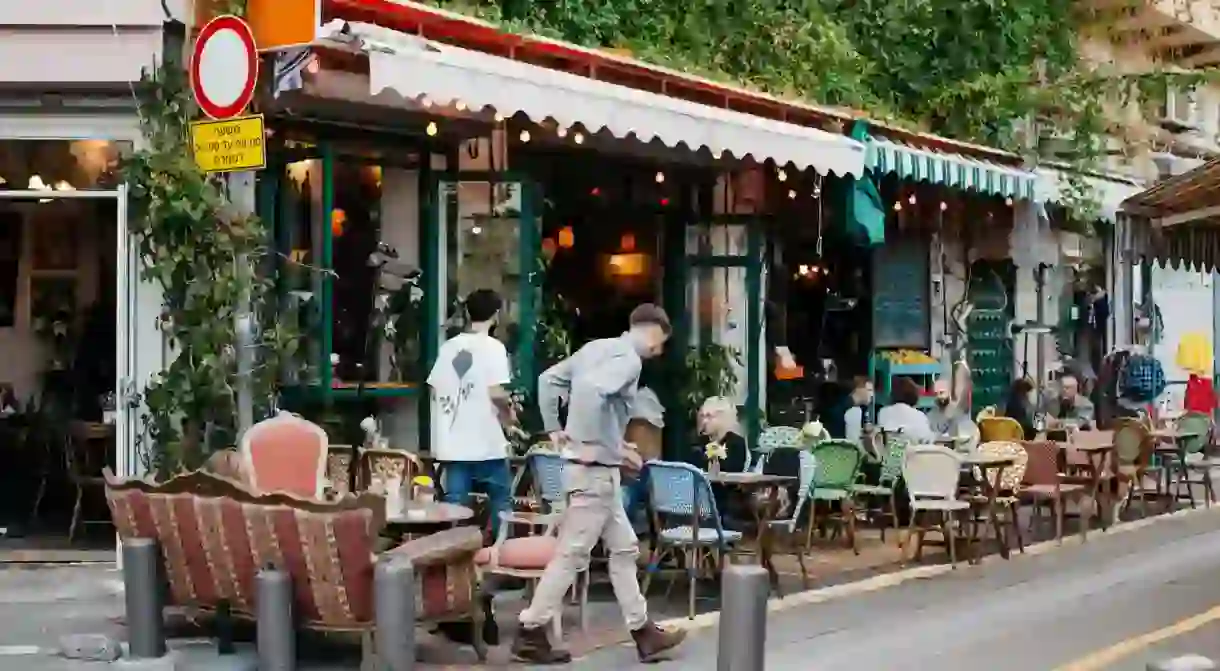The Best Neighbourhoods in Tel Aviv, Israel

Home to everything from beaches to Bauhaus buildings and bustling boulevards, Tel Aviv is a city best explored on foot. Though only 52sqkm (20sqmi) in size, the city is home to neighbourhoods as diverse as its population, and a walk through any of these will give you a sense of the city’s vibrant atmosphere and rich history.

Neve Tzedek, a village within the city
Founded in the late 1800s, Neve Tzedek predates Tel Aviv itself. Known as the city’s first neighbourhood (it was, indeed, the first place to house Jewish settlers outside of Jaffa in 1887), the quarter is home to hundreds of historic sandstone buildings, set among early 1920s Eclectic architecture, mid-’90s Bauhaus designs and brand-new luxury developments.
With this diverse range of architecture and narrow, pedestrianised streets, Neve Tzedek has all the charm of a quirky village but is located just outside the city centre. Real-estate prices in the area have grown steadily since the 1980s, making it one of the city’s most expensive and coveted areas.
Its main street, Shabazi, is lined with boutique design stores, artists’ studios and gourmet restaurants. A walk down these winding paths, especially with a scoop of ice cream from Anita in your hand, makes for a day well spent.



Florentin, a haven for art and design
Once one of Tel Aviv’s main industrial zones, located between Jaffa and Neve Tzedek, Florentin is today the city’s trendiest neighbourhood. The area, best known for its bohemianism, saw a wave of artists and musicians move here in the late 1980s, attracted by the cheap rent prices.
Soon, the streets of Florentin were revitalised, painted with street art that has come to characterise the neighbourhood. This revamp, coupled with the release of Florentin, a popular 1990s TV show about young people struggling to make their lives in Tel Aviv, brought attention to the previously derelict area.
Today, Florentin retains its gritty, artistic edge but also houses a new wave of boutique venues, from tattoo parlours to art galleries. Visitors flock to its popular restaurants during the day – think fusion cuisine and speciality vegan venues – but the neighbourhood is even more popular at night, with bars and nightclubs that stay open until the early hours.


Lev Ha’ir, the heart of the city
Meaning “heart of the city” in Hebrew, Lev Ha’ir is just that, located bang in the centre of Tel Aviv and housing all of the cultural must-sees in the city. You can wander through the iconic architecture of the White City – a Unesco World Heritage site that comprises 4,000 Bauhaus buildings – and along Rothschild Boulevard, Tel Aviv’s first official road. But it’s not all about Bauhaus; Lev Ha’ir has become home to the entrepreneurs driving Tel Aviv’s booming start-up scene, with skyscrapers dotted among the historic buildings.
There are plenty of nearby cultural institutions, too, from the Habima, one of the first Hebrew theatres in the world, to museums such as the Tel Aviv Museum of Art. Lev Ha’ir is also home to Carmel Market (Shuk HaCarmel), the largest in the city. The shuk trades everything from spices to fashion during the day and becomes a bustling nightlife spot in the evening.



Yemenite Quarter (Kerem Hateimanim), a centre of tradition
Behind Lev Ha’ir’s famous Carmel Market, the historic Yemenite Quarter, or kerem, is still relatively untouched by tourism. Founded by Yemenite immigrants in the late 1800s, the area is home to a host of traditional Yemeni restaurants, including Shlomo & Doron, Tel Aviv’s most celebrated hummus joint.
The neighbourhood’s quiet, cobbled roads lead past picturesque houses from the early 1900s that have become popular among artists, who decorate the streets with their designs. Other artistic developments have also emerged in the area, including the Nachlat Binyamin pedestrian mall, a venue known for its arts and crafts fair and regular street performers.



Shapira, Tel Aviv’s best-kept secret
Just south of Florentin, Shapira is often known as the trendy neighbourhood’s quieter counterpart, an artistic quarter yet to be touched by gentrification.
Over the past 10 years, numerous studios have opened their doors in Shapira, as have many independent galleries. In particular, the popular Artspace Tel Aviv, a non-profit contemporary art gallery and teaching centre, has brought many creatives to the area, and with them lots of unique street art and outdoor design.
Also known for its multicultural gastronomy – it is home to everything from Bukharian restaurant Hanan Margilan to the Chinese cuisine of Xing Long – Shapira has an authentic feel, with plenty of independent shops lining its streets and few chain restaurants.


Jaffa (Yafo), a hub of history
Named after Yafet, son of Noah, the ancient port city of Jaffa is said to have been built after the biblical flood that wiped out much of the life on Earth. The city saw empires, from the Persians to the Ottomans, come and go before becoming part of Tel Aviv in 1950. The quarter is surrounded by stone fortifications, built by the Canaanites in the Bronze Ages, and the ancient alleyways within these confines make Jaffa an excellent place to spend the day.
Jaffa Flea Market (Shuk Hapishpishim) is one of the area’s biggest draws. Overlooked by the city’s famous Ottoman clock tower, the market sells traditional crafts, from Persian tiles to Arabic ceramics, produced by Israel’s multicultural population. Driven by an increase of visitors to the area, it has seen a new wave of cafes, boutiques and art studios open among the traditional venues, spread across several roads, alleyways and covered paths in Jaffa Old Town.



This article is an updated version of a story created by Lior Kantor.













